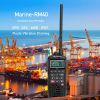What is NOAA weather radio?

NOAA Weather Radio is a nationwide network of radio stations broadcasting continuous weather information directly from National Weather Service (NWS) offices across the country. The broadcasts include warnings, watches, forecasts, current weather observations, and other hazard information, 24 hours a day.
Working with the Federal Communications Commission's Emergency Alert System, NOAA Weather Radio is an "all hazards" radio network, making it the single source for the most comprehensive weather and emergency information available to the public. It broadcasts warning and post-event information for all types of hazards - both natural (such as tornadoes, earthquakes and tsunamis) and technological (such as chemical releases or oil spills). NOAA Weather Radio will also be used to broadcast AMBER alerts for missing children.

Known as the "Voice of the National Weather Service," the NOAA Weather Radio network has more than 750 transmitters, covering nearly 90% of the 50 states, along with the adjacent coastal waters, Puerto Rico, the U.S. Virgin Islands, and the U.S. Pacific Territories. NOAA Weather Radio broadcasts in the VHF public service band (between 162.400 and 162.550 megahertz (MHz)) and hence you need a special radio receiver or scanner in order to pick up the signal.
All NOAA Weather Radio stations broadcast on one of seven frequencies in the VHF Public Service band: 162.400 megahertz (MHz), 162.425 MHz, 162.450 MHz, 162.475 MHz, 162.500 MHz, 162.525 MHz, and 162.550 MHz. While some older Weather Radio receivers will only have three frequencies (162.400, 162.475 and 162.550), any receiver sold today should be able to pick up stations on any of the seven frequencies.
What is the typical broadcast range of a NOAA Weather Radio transmitter?
The normal broadcast range of a full-power transmitter (1000 watts) over level terrain is approximately 40 miles. The effective range depends on terrain, height and power of the transmitting antenna, quality of the receiver, and whether you use an indoor or outdoor antenna. Before you buy a Weather Radio receiver, make sure that your area is covered by one of the transmitters.






